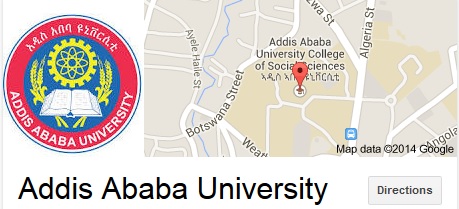overview
Background
Computation is now regarded as an equal and indispensable partner, along with observational, experimental, and theoretical methods in the advancement of scientific knowledge. It integrates the disciplines of mathematics, science, and engineering and uses computers, networking, and visualization to solve real-world problems.
Computational Science allows us to execute tasks that were previously difficult to accomplish due to the complexity of the mathematics involved, the large number of calculations or a combination of the two. It takes advantage of not only the improvements in computer hardware, but probably and more importantly the improvements in computer algorithms and computer techniques. The overall aim is to acquire the type of skills that will make it possible to model various facets of the world using computers. With appropriate models, algorithms and inputs, the answers obtained are important for design, decision-making, planning, etc.
This is an emerging area of specialization that focuses on an interdisciplinary approach to the solution of complex problems with numerical computations and graphics visualization playing a key role in scientific investigations. It has a core knowledge base and a broad application base. In a broad sense, it means science done computationally. In a more focused sense, it means the science of computing. Its major emphasis lies in a progression from a purely theoretical concept to the main area of computation, interpretation and application. A key aspect of its execution lies on availing a student with the opportunity to work in an interdisciplinary setting wherein the ultimate goal is the solution of a practical problem using the state-of –the-art computational techniques rather than the proof of a theorem based on purely theoretical considerations.
Computational Science differs specifically from other scientific disciplines, in that analysis, methodologies and algorithms are directed towards the numerical solution of a problem. It is not just operating a computer to generate results. It entails more than an engineer or scientist using a canned program to generate and visualize results in the so called ‘black-box’ format without grasping all the intermediate computational algorithms and steps. It involves being acquainted with the actual hands-on computational steps and a concise knowledge of the physics of the problem whose numerical solution is sought; followed by a concise interpretation of the results and a prediction if need be. This quintessentially is the core of computational science.
Modern advances in the areas of applied mathematics, numerical and theoretical methods coupled with the availability of computational resources, have led to tremendous progress in the development and integration of computer simulation techniques. These have been found applicable to a wide variety of fields in mathematics, physics, agriculture, and management of natural resources, engineering, medicine, social sciences, and economics to mention just a few. This evolution has spilled not only into the areas of fundamental research but in real-world design problems.
We are set in a time of extraordinary advances in science, technology, and education. At the core of these rapid developments is a dramatic increase in the power and use of computers. Capitalizing on these advances, computational science blends with several fields including computer science, applied mathematics, and application sciences (such as biology, chemistry, physics, earth sciences, engineering, and business among many others).
Computational science must be distinguished from computer science. Computer science focuses on the computer itself; it is the science and engineering of computer systems, including hardware and software. On the other hand, Computational Science is an interdisciplinary field that uses the technology of the computer to model and study problems in mathematics, physics, chemistry, biology, earth sciences and other applied science and engineering fields. A computational scientist needs to be conversant with both the fundamentals of computer science and with the scientific field whose problems he/she wishes to solve.
Advances in computational science provides us with tools for capturing and analyzing vast amounts of experimental and observational data which previously could have been thought of as intractable or way beyond our power of analysis. Such tools will be of great utility for the exploration and understanding of physical phenomenon as well as provide us with a better insight into the analysis, design and optimization of systems using computational techniques.
The Computational Science in Addis Ababa university is designed in such a way that a student’s area of interest is primarily determined by his/her final research project otherwise most of the courses are taken in common. This not only encourages flexibility and competence, it enhances the student’s ability to face multidisciplinary challenges that characterize the fast evolving world of technology we live in.
For example, Computational Science (COSC) is an important part of biology , biophysics, medicine, chemistry, engineering, mathematics, physics, astronomy, space science, earth and environmental sciences, linguistics, and every other fields in which data exist in massive quantities, and research problems exist that are otherwise too big, too small, too expensive, too scarce, or too inaccessible to study. Hence a solid COSC program demands a strong emphasis on computational skills and ability to conceptualize real-life problems from a mathematical and modeling viewpoint instead of specialization in a narrow field. The two-years program ends with a thesis write-up and presentation. The topic should have a strong, and well defined computational core in order not to compromise the overall focus of the program.







